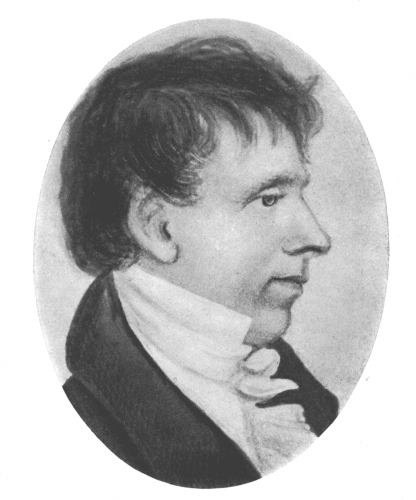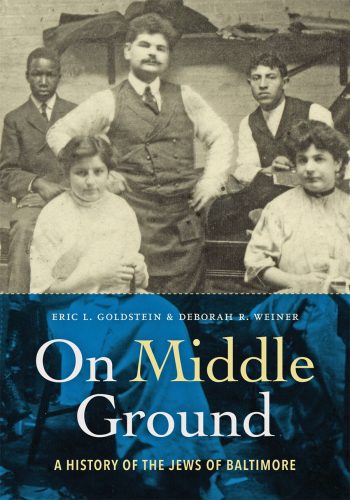Symbolic Gesture or Big Deal?

This month’s edition of JMM Insights is written by JMM Executive Director Marvin Pinkert. You can read more posts by Marvin here.

I bring this document to your attention not only because it will soon turn 200 years old, but also because it is so intertwined with the story of our current exhibit, Amending America: The Bill of Rights and the launch last week of the JMM-commissioned book on the history of our community, On Middle Ground: A History of Jewish Baltimore.
Let me begin by explaining what the pamphlet is and what it isn’t. The “Sketch” is a polemic, an argument in favor of the passage of the Jew Bill. The Jew Bill was intended to ameliorate the impact of the provision in the Maryland State Constitution of 1776 requiring a “Christian oath” for anyone holding public office (civil or military).

The pamphlet consolidated the case for passage, including newspaper editorials from such diverse places as Natchez, Mississippi and Danville, Virginia condemning “Religious Intolerance” in Maryland, as well as letters of support from such notables as John Adams, Thomas Jefferson and James Madison. In the great American political tradition, it also veers into the partisan, taking a shot at the Federalist Party for its nearly uniform opposition to the bill.
While this is a fascinating document, it is NOT the Jew Bill. The Museum does not currently own an original copy of the legislation that receives final passage in 1826 (though some members of our Board are still hunting for the possibility that the document exists and could be put on loan to us).

The program is called “Myth vs. Reality: The Maryland Jew Bill in Historic Context.”
Without giving away everything that Eric will say (I do want you to come to the program or at least read the book), I would simply point out that Eric found ample evidence that the claims of disability and exclusion attributed to the “Christian oath” provision have been greatly exaggerated – that the rule was not rigorously enforced and that there were relatively easy work-arounds for those wishing to serve.
So was the passage of the Jew Bill just a symbolic gesture or was it a big deal?
Working at the National Archives I ran into this sort of question often. After all, King George III had issued a proclamation declaring the colonies to be “in rebellion” in August, 1775 and sent armies to North America to suppress the revolution… so how significant was the much belated Declaration of Independence eleven months later? As our current exhibit points out, our vaunted FIRST amendment was actually the third article of amendment when it came out of Congress, and was only promoted to first place when the first two amendments failed to be ratified. Lincoln put so many restrictive clauses into the Emancipation Proclamation that it fell well short of “freeing the slaves.”. He even went so far as to declare it a “war measure” rather than a charter of freedom. Are all these documents over-rated? Or is there something else at work?
I recently listened again to a 2013 interview with Lonnie Bunch, Director of the National Museum of African-American History and Culture, on the occasion of the 150th anniversary of the Emancipation Proclamation. Lonnie responded to a reporter’s question by saying:
The Emancipation Proclamation is without a doubt the most misunderstood document in American history, that on the one hand the Emancipation Proclamation did not end slavery. Slavery was ended when the 13th Amendment was ratified. But what the Emancipation Proclamation does that’s so important is it begins a creeping process of emancipation where the federal government is now finally taking firm stands to say slavery is wrong and it must end.
I find myself echoing Lonnie’s sentiment with respect to the Jew Bill. Maryland was not an environment of horrendous religious oppression in 1818 (nor was it a paradise of tolerance after the bill’s passage in 1827). In many ways, the Jew Bill was a symbolic gesture, having limited practical impact beyond facilitating the political ambitions of Jewish Baltimoreans Jacob Cohen and Solomon Etting. But sometimes, symbolic gestures are genuinely a big deal, moving, even if slightly, the long arc of the moral universe.

